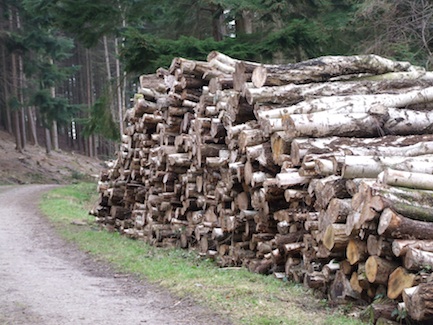FAQs | Help | About Us | Contact Us
Home | Shop Online | Basket | Delivery | Checkout
The simple answer is - the drier the firewood the more heat you get for your money!
Freshly cut ‘green’ timber typically has a moisture content of 50% or more and as with burning anything damp it will be difficult to light and give out little heat. Burning wet firewood will also produce a lot of smoke with an acrid smell, ash and chimney tar. Using seasoned firewood can help reduce these problems, but only kiln dried logs will maximise the heat output.

Bertie's timber seasoning in Hargate Forest, Tunbridge Wells.
The traditional method used to dry firewood is known as seasoning. This process involves stacking timber outside in the open for a year or two to allow it to dry naturally in the sun and wind. The acceptable moisture content for seasoned firewood is usually regarded as 35% or below and this level of moisture content could provide you with an acceptable heat output, with lower levels of smoke, ash and tar than freshly cut ‘green’ logs.
To produce the very best quality firewood a kiln is needed to bring the moisture content of the logs produced down to an average of 20% or less. Burning firewood with this level of moisture content will give you the highest heat output and mean you use less logs. It also helps minimise smoke, smell, ash and tar.
Bertie’s are the only company in the South East with passive and active log drying kilns, giving Bertie’s the ability to produce dry ready to burn firewood however harsh the Winter. The unique kilns are heated using the sun and the waste wood produced during firewood production, making the log drying process carbon neutral and highly sustainable.